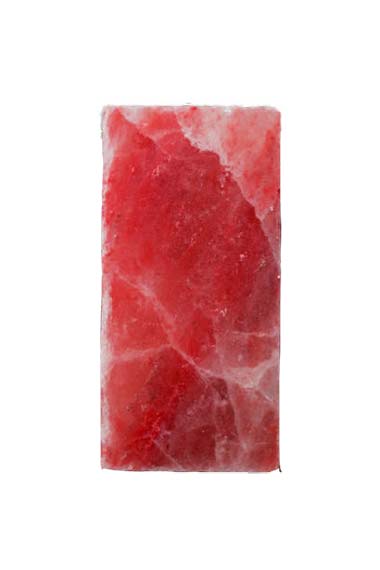The distinctive pink color of Himalayan edible salt is a result of its mineral composition, particularly the presence of trace minerals such as iron oxide. While sodium chloride (salt) is the primary component of Himalayan salt, it also contains various other minerals in small amounts, including iron, magnesium, potassium, and calcium.
The presence of these minerals, particularly the iron oxide, gives Himalayan salt its characteristic pink hue. The exact shade of pink can vary depending on factors such as the concentration of minerals and the specific conditions during the salt’s formation. In some cases, Himalayan salt may exhibit variations in color, ranging from pale pink to deep reddish-pink or even orange hues.
It’s important to note that the pink color of Himalayan salt is entirely natural and is not the result of any artificial additives or dyes. This natural coloring is one of the distinctive features that sets Himalayan salt apart from other types of salt and contributes to its popularity in both culinary and decorative applications.
Edible salt characteristics:
Himalayan edible salt possesses several unique characteristics that distinguish it from other types of salt. These characteristics contribute to its popularity among chefs, health-conscious consumers, and individuals interested in natural and artisanal products. Here are some of the standout features of Himalayan edible salt:
1. Distinctive Pink Color:
One of the most recognizable traits of Himalayan salt is its characteristic pink hue. This color is attributed to the presence of trace minerals, particularly iron oxide, which naturally occurs in the salt deposits of the Himalayan region. The varying shades of pink, ranging from pale to deep rose, add visual appeal to dishes and make Himalayan salt a popular choice for both culinary and decorative purposes.
2. Mineral-Rich Composition:
Himalayan salt is renowned for its mineral content, which includes essential trace minerals such as iron, magnesium, potassium, and calcium. These minerals not only contribute to the salt’s unique flavor profile but also provide potential health benefits. Some proponents believe that the minerals in Himalayan salt may support electrolyte balance, hydration, and overall well-being.
3. Delicate Flavor Profile:
Unlike highly processed table salt, Himalayan salt has a milder and more nuanced flavor profile. It lacks the harsh, metallic taste often associated with iodized salt and instead offers subtle hints of minerals that can enhance the taste of food without overpowering it. This makes Himalayan salt ideal for use as a finishing salt or as a versatile seasoning in various culinary applications.
4. Culinary Versatility:
Himalayan salt is incredibly versatile in the kitchen, suitable for a wide range of culinary uses. It can be used for seasoning, marinating, curing, grilling, baking, and even as a cooking surface. Himalayan salt blocks and plates are increasingly popular for cooking and serving, as they impart a delicate saltiness and unique flavor to foods while also providing a visually stunning presentation.
5. Natural and Unprocessed:
Himalayan salt is typically less processed than conventional table salt, making it a preferred choice among those seeking natural and minimally refined food products. It is often hand-mined and undergoes minimal processing, preserving its natural purity and integrity. This natural and artisanal production process adds to the appeal of Himalayan salt for consumers who prioritize authenticity and quality.
6. Environmental Considerations:
Himalayan salt is harvested from ancient salt deposits deep within the Himalayan mountains, often through traditional mining methods. While mining practices can vary, there is growing attention to sustainability and environmental conservation in the Himalayan salt industry. Some producers prioritize ethical sourcing practices and environmental stewardship to minimize their impact on the fragile Himalayan ecosystem.
Comparing Himalayan edible Salt to Other Types of Salt
1. Mineral Composition:
Contrasting the mineral content of Himalayan salt with other types, highlighting the unique array of minerals found in Himalayan salt, such as iron, magnesium, and potassium, compared to the more limited mineral profile of table salt.

2. Color and Appearance:
Discussing the distinctive pink color of Himalayan salt in contrast to the white appearance of table salt and the various hues of sea salts, and exploring how these differences affect culinary presentation and consumer preferences.
3. Flavor Profile:
Examining the flavor differences between Himalayan salt, which is known for its subtle, nuanced taste with hints of minerals, and table salt, which tends to have a more intense and straightforward salty flavor, as well as the distinctive flavors of various sea salts from different regions.
4. Processing Methods:
Contrasting the processing methods used for Himalayan salt, which typically involves minimal processing to preserve its natural minerals and purity, with the highly refined and processed nature of table salt, which often includes additives like anti-caking agents and iodine.
5. Culinary Applications:
Exploring the diverse culinary uses of Himalayan salt, including seasoning, grilling, curing, and presentation, compared to the more limited applications of table salt, which is primarily used for seasoning during cooking and baking.
6. Health Considerations:
Discussing the potential health benefits associated with Himalayan salt, such as its mineral content and perceived purity, compared to the health concerns related to excessive sodium intake from table salt and the potential risks associated with certain types of sea salts, such as environmental contaminants.
7. Environmental Impact:
Comparing the environmental impact of harvesting Himalayan salt from ancient salt deposits in the Himalayan mountains to the environmental concerns associated with mining and processing table salt, as well as the sustainability of sea salt production methods.
8. Cost and Accessibility:
Considering the cost and accessibility of Himalayan salt compared to table salt and other specialty salts, examining factors such as availability, production costs, and consumer demand.
9. Cultural and Historical Significance:
Exploring the cultural and historical significance of salt in different regions and civilizations, including the role of Himalayan salt in traditional Himalayan culture and its use in ancient healing practices, rituals, and culinary traditions.
10. Consumer Preferences and Trends:
Analyzing consumer preferences and trends related to salt choices, including the growing popularity of Himalayan salt among health-conscious consumers, chefs, and food enthusiasts, and the factors driving these preferences in the culinary industry.
Looking for edible salt: Click here





